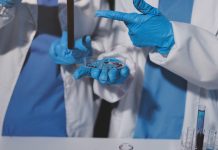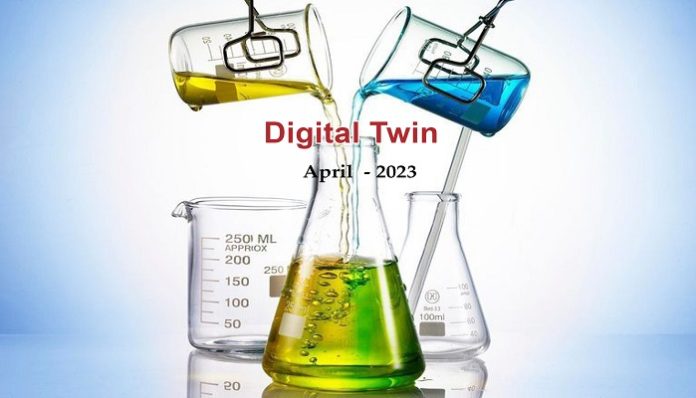Digital Twin technology is transforming the manufacturing industry by creating virtual replicas of physical objects and systems that can be monitored and analysed in real-time. EPC firms too can gain significant advantages in cost, time and quality by adopting digital twins. In the future clients are likely to demand digital twins as a value-added deliverable from EPC contractors.
Like in almost every other business, digitalisation is rapidly spreading its tentacles in the Engineering, Procurement and Construction (EPC) sector too and as a result, the EPC firms are reaping a lot of advantages in cost, time and quality. Particularly interesting for EPC companies is the concept of Digital Twin. A digital twin is a virtual replica of a physical asset, process or system. Digital twin technology was first used by NASA for assessing and simulating the conditions of the Apollo 13 mission decades before the term was officially coined. Michael Grieves (then on faculty at the University of Michigan) is credited with first applying the concept of digital twins to manufacturing in 2002. The concept of digital twins is best enunciated by Grieves himself – “Only when we get it to where it performs to our requirements do we physically manufacture it. We then want that physical build to tie back to its digital twin through sensors so that the digital twin contains all the information that we could have by inspecting the physical build.” The digital twin of a chemical plant is a comprehensive model created by combining data from various sources, such as simulation software, IoT sensors, and SCADA systems. This digital model can be used to monitor the performance of the plant, optimise operations and predict and troubleshoot potential problems.
Advantages
Digital twins offer several advantages over the lifecycle of a chemical plant. It provides plant operators the wherewithal to continuously monitor the assets across their entire lifecycle and track changes and fine-tune the parameters for optimum performance. Digital twin technology can be used to optimise chemical processes. It can simulate the chemical reactions that occur in the plant and identify the optimal operating conditions for the process. The digital twin can be used to optimise the plant’s production schedule. It can simulate different production scenarios and identify the most efficient schedule that meets production targets while minimising costs. Digital twin technology can be used for predictive maintenance of plant equipment. It can monitor the condition of equipment in real-time and identify when it needs to be repaired or replaced. This helps to reduce maintenance costs and plant downtime. The digital twin can be utilised to simulate emergency scenarios and test the effectiveness of safety protocols. It can identify potential safety hazards and mitigate risks before they get out of hand.
Project Phase Opportunities
The use of digital twins during the operating phase of a chemical plant is well-established. However, its application by EPC companies during the project phase is a relatively new trend. The biggest benefit of having a digital twin during the project phase is that it allows the stakeholders to take more informed decisions fairly early. These crucial decisions come with a huge potential to save operating costs during the lifetime of the project. Digital twin allows the management to understand the implications of design decisions early in the project phase. During the planning, design, and construction of a new chemical plant, project digital twins can optimise the design in line with operational requirements and reduce the risk of delayed or non-conformant construction. Digital twins help cross-functional teams to collaborate on the design of complex systems in an interactive and immersive manner. The superior quality assurance and quality control offered by digital twins are significantly reducing mistakes and corrections during the construction phase. Project digital twins can also improve logistics and communication within the supply chain, which can help maintain the schedule and budget.
Types of Digital Twins
There are three main types of digital twins, each serving a different purpose. EPC firms can benefit from all three types of digital twins during various phases of the project in different ways. A process digital twin is a virtual model of a physical system, which is used to optimise the process, improve efficiency, and reduce costs. It helps businesses to simulate and test different scenarios to identify the best design from various options. EPC companies can use the process digital twin during the engineering phase, particularly for residual basic engineering, FEED preparation and validation. A product digital twin is a virtual model of a physical product, which is used for design, simulation, testing, and optimisation. It helps manufacturers to identify issues and optimise the performance of the product before it is built. The product digital twin will be of immense benefit to the EPC company during the construction phase. A performance digital twin is a virtual model of a physical asset, which is used to monitor and analyse its performance in real time. It helps businesses to identify issues, optimise performance, and predict maintenance needs. EPC companies can think of the performance digital twin as a value-added deliverable to the end customer.
Components
A digital twin is a dynamic digital 3D model of a real-world physical entity that is continuously updated by live data captured from the physical space. It consists of the following components: the real-world physical entity; the data collected from the physical entity and surrounding processes that are also linked to its digital counterpart; the digital 3D representation of the physical entity; and a software program that processes the incoming data and applies it to the digital model. The bi-directional stream of data between the digital model and the physical object is the key. This allows the digital twin to not only monitor and mimic accurate current conditions of its real-world counterpart, but also evaluate collected data and inform decisions for optimisation. The digital twin is a very open-ended concept and can be completely customised to fulfil almost any need from simply monitoring and providing a descriptive data output, to simulating “what-if” conditions, to controlling the real-world physical entity.
IoT
A digital twin is a virtual representation of a physical system and it needs to be constantly updated with real-time data to accurately reflect the current state of the physical system. Gathering this data and ensuring its accuracy is a challenging task. Internet of Things (IoT) is the backbone on which a digital twin is constructed. IoT plays a crucial role in the implementation of digital twins by providing real-time data and information about the physical system being modelled. IoT devices collect data from the physical system and transmit it to the digital twin, where they are processed and analysed.
Epilogue
The digital twin is a complex concept. The numerous benefits it offers are not so easy to grasp on a superficial level. Constructing a digital twin is expensive and time-consuming. As the awareness about digital twin grows in the industry, more chemical companies are likely to incorporate it as a deliverable in the EPC contracts. EPC firms that can deliver this value not only stand to gain new business opportunities, but can also benefit by implementing projects on time and within budget.
Readers’ responses may be sent to:
k.sahasranaman@gmail.com or
chemindigest@gmail.com

































